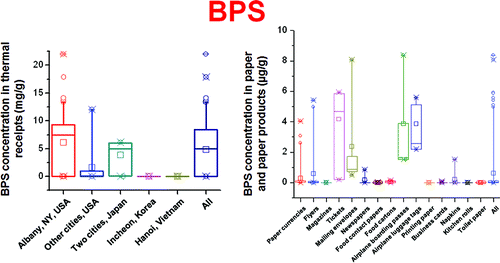People are being exposed to higher levels of the substitute for BPA in cash register thermal paper receipts and many of the other products that engendered concerns about the health effects of bisphenol A, according to a new study. Believed to be the first analysis of occurrence of bisphenol S (BPS) in thermal and recycled paper and paper currency, the report appears in ACS' journal Environmental Science & Technology.
Kurunthachalam Kannan and colleagues point out that growing evidence of the potentially toxic effects of BPA has led some manufacturers to replace it with BPS in thermal paper and other products. BPS is closely related to BPA, with some of the same estrogen-mimicking effects, and unanswered questions exist about whether it is safer. Nevertheless, very little is known about BPS occurrence in the environment, the scientists noted. To fill that knowledge gap, they analyzed 16 types of paper from the U.S., Japan, Korea and Vietnam.
The study detected BPS in all the receipt paper they tested, 87 percent of the samples of paper currency and 52 percent of recycled paper. The researchers estimate that people may be absorbing BPS through their skin in larger doses than they absorbed BPA when it was more widely used – 19 times more BPS than BPA. People who handle thermal paper in their jobs may be absorbing much more BPS.
More information: “Bisphenol S, a New Bisphenol Analogue, in Paper Products and Currency Bills and Its Association with Bisphenol A Residues” Environ. Sci. Technol., 2012, 46 (12), pp 6515–6522. DOI: 10.1021/es300876n
Abstract
As the evidence of the toxic effects of bisphenol A (BPA) grows, its application in commercial products is gradually being replaced with other related compounds, such as bisphenol S (BPS). Nevertheless, very little is known about the occurrence of BPS in the environment. In this study, BPS was analyzed in 16 types of paper and paper products (n = 268), including thermal receipts, paper currencies, flyers, magazines, newspapers, food contact papers, airplane luggage tags, printing paper, kitchen rolls (i.e., paper towels), and toilet paper. All thermal receipt paper samples (n = 111) contained BPS at concentrations ranging from 0.0000138 to 22.0 mg/g (geometric mean: 0.181 mg/g). The overall mean concentrations of BPS in thermal receipt papers were similar to the concentrations reported earlier for BPA in the same set of samples. A significant negative correlation existed between BPS and BPA concentrations in thermal receipt paper samples (r = −0.55, p < 0.0001). BPS was detected in 87% of currency bill samples (n = 52) from 21 countries, at concentrations ranging from below the limit of quantification (LOQ) to 6.26 μg/g (geometric mean: 0.029 μg/g). BPS also was found in 14 other paper product types (n = 105), at concentrations ranging from 88%). To our knowledge, this is the first report on the occurrence of BPS in paper products and currency bills.
Journal information: Environmental Science & Technology
Provided by American Chemical Society






















